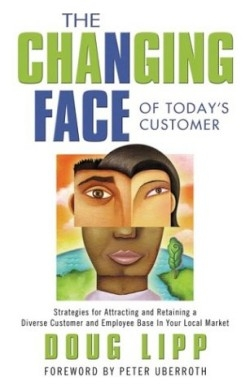The Changing Face of Today's Customer
Strategies for Attracting and Retaining a Diverse Customer and Employee Base in Your Local Market
With an unprecedented mix of cultures in the American work environment today, employees at all levels of organizations need to learn to properly deal with the expectations of people from different cultures. “Mistakes are not limited to those on the front lines, the customer service employees,” asserts the author. He draws on his experience as former head of training at Disney Studio’s Walt Disney University, and lessons learned on the startup team of Tokyo Disneyland, to discuss strategies for effectively dealing with cultural diversity.
Simple mistakes resulting from common-sense errors can have a detrimental effect on business or working relationships. One true story illustrates how something as simple as a name badge caused a cultural conflict that took six months to be resolved. The Disney tradition that all employees wear nametags showing only their first names was not well received by the Japanese team, who customarily use only titles or last names in business as a sign of respect. “Such minor differences,” writes Lipp, “can loom very large in cultural conflicts and are the source of many future business problems.”
The book provides chapters discussing elements of cultural behavioral differences. It describes interacting with people from other backgrounds as a “cultural iceberg,” with communication as only the tip of the iceberg and cultural differences as the remainder, and suggests ways of adapting to such differences, such as “style switching.”
Several pages are devoted to signs of poor service, such as being “too chatty or familiar with the customer,” as well as signs of good service, like treating all customers with respect. Several exercises offer readers the opportunity to rate their business’s customer service approach and cultural IQ.
Major obstacles to a global service approach are illustrated through various scenarios that offer culturally sensitive ways of handling situations. For example, the “When In Rome Factor” advocates using cultural sense over common sense in multicultural dealings. Communication style is another important consideration, and the book lists critical areas that should be adjusted when communicating with non-native speakers of English, such as not interrupting and avoiding slang. An example illustrates how a speech can be improved using these approaches.
Case studies show how education was the key for Pebble Beach Company, how Starbucks won by being other-centered, and how Continental Airlines improved through cultural awareness training, flexibility, and effective communication.
In this truly global economy where it is no longer necessary to travel abroad to deal with other cultures, it is useful to have a handbook like this to guide the way.
Reviewed by
Cindy Kryszak
Disclosure: This article is not an endorsement, but a review. The publisher of this book provided free copies of the book to have their book reviewed by a professional reviewer. No fee was paid by the publisher for this review. Foreword Reviews only recommends books that we love. Foreword Magazine, Inc. is disclosing this in accordance with the Federal Trade Commission’s 16 CFR, Part 255.

